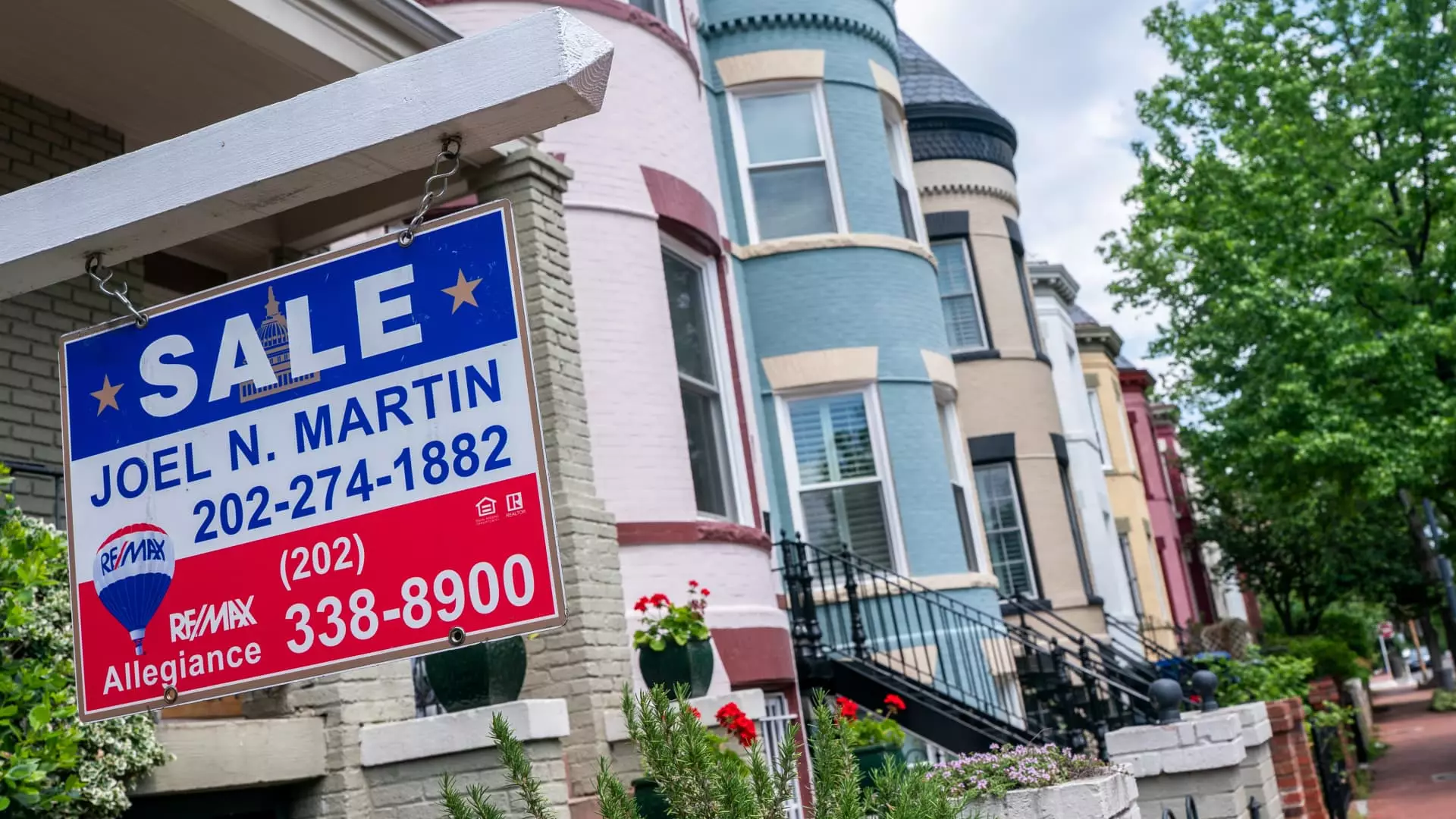The current state of the housing market paints a dismal picture. Despite the signs of economic growth in various sectors, the residential real estate market appears to be in a perpetual state of decay. The recent report from the National Association of Realtors reveals an unmistakable downturn: a discouraging 0.5% drop in the sales of previously owned homes for April, capped off by a harrowing low of 4 million units sold, the worst performance for this month since the dark days of 2009. It prompts a crucial question: How did we arrive at a moment where home sales languish at only 75% of the pre-pandemic levels, even with millions of jobs supposedly created?
The reality is chilling, especially for first-time buyers embarking on what should be an exciting journey toward homeownership. It is evident that while jobs have proliferated, the real estate sector remains a mirage, with a significant component missing: consumer confidence. Surveys indicate that potential homebuyers are stymied by elevated interest rates and a palpable sense of unpredictability in the market, leaving them hesitant to leap into a convoluted and complex transaction.
The Staggering Supply and its Consequences
As April drew to a close, the available supply of homes hit a high not seen in five years—a crucial indicator that typically suggests a burgeoning buyer’s market. With inventory levels climbing 9% month-over-month, equating to 1.45 million homes for sale, one might expect prices to dip and a negotiation paradise for buyers to emerge. Yet, the median selling price of $414,000 suggests otherwise. Although it may represent a year-over-year increase of 1.8%, it masks the reality of stagnated appreciation compared to last year’s more robust gains.
In a classic case of supply meeting weak demand, the apparent easing of home prices has done little to revive the market. Home sales under the $250,000 threshold have seen a drop of over 4%, pointing to a disheartening trend for affordable options. The struggle is palpable, particularly for those who hoped to capitalize on the growing inventory—an abundance that should ideally serve as a beacon of hope for buyers trapped in rising cost dynamics.
The Psychological Barrier of High Interest Rates
What towers over this market like a dark cloud are the elevated mortgage rates. While economists had predicted a slight recovery in housing transactions, the reality of rising rates has clamped a financial vice around the aspirations of prospective homeowners. Lawrence Yun, the NAR’s chief economist, recognizes that pent-up demand exists but remains unrealized due to the grim atmosphere surrounding financing. As interest rates escalate, the capacity to borrow diminishes, crippling the willingness to act.
At face value, the concept of a recovering job market coupled with a roaring economy might inspire optimism. Yet, further examination reveals an alarming disparity: individuals are unwilling to purchase homes when the cost of borrowing escalates. The market is caught in a web of conflicting realities, where opportunity knocks yet remains unquestioned due to the sheer financial burden imposed by rising rates.
The Class Divide: An Emerging Housing Crisis
Even amidst these challenges, the luxury segment tells a different story—one that highlights an alarming divide in our economy. Homes priced over $1 million witnessed sales soaring nearly 6%, showcasing a worrying trend where the affluent segment of the market thrives while those who merely wish to secure an entry-level home flounder. This stark contrast underscores an increasingly bifurcated housing landscape, where wealth disparity governs access to fundamental resources like housing.
Moreover, rising contract cancellation rates—a stark jump to 7% in April from a previous norm of 3-4%—further reflects a market in distress. The uncertainty and complexity of purchasing homes effectively disengage even the enticed buyer, pushing them to rethink what should be a significant life milestone.
Right now, we stand at a crossroads where the vision of equitable and accessible homeownership for all seems to drift further away. The prevailing concept of the American Dream lies at a critical juncture, with rising barriers and elusive opportunities serving to limit the paths to homeownership for many. In this environment, it’s clearer than ever: the housing market recovery cries out for more than just economic indicators; it demands a fundamental reevaluation of policies and a commitment to galvanizing consumer confidence to restore what has been lost.


Leave a Reply